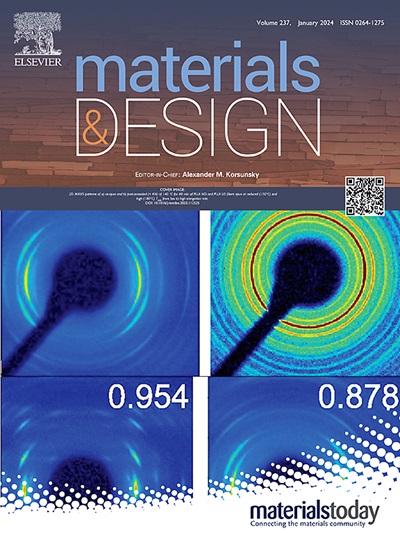Additively manufactured stochastic and gyroid scaffold design towards osseointegration and bone regeneration in a rabbit femur model
IF 7.6
2区 材料科学
Q1 MATERIALS SCIENCE, MULTIDISCIPLINARY
引用次数: 0
Abstract
The design of scaffolds has evolved overtime from simple geometries such as non-porous structures to more advanced lattice-based structures such as triply periodic minimal surfaces (TPMS). This evolution brought along better response to implants in terms of compatibility and promotion of cell ingrowth. The use of novel designs like stochastic designs, impart the user with the ability to locally control the porosity of the scaffold and thus fine tune its functional and structural properties like stiffness and porosity gradient. Stochastic structures with locally controlled porosity better replicate the microstructural complexity of natural tissues. In this paper, the versatility of the stochastic scaffold design approach was tested by mimicking the porosity gradient of a bone in all three axes (labelled as uniaxial, biaxial and triaxial) and successfully printing them using multiple different 3D printing processes. These designs were then tested for cell viability in vitro and since all functionally graded scaffolds along with the relatively simpler uniform porosity design displayed positive results, the stochastic scaffold with uniform porosity was selected for in vivo studies involving a rabbit femur model along with a solid cylinder and gyroid TPMS structure as controls. The titanium alloy samples used for in vivo testing were evaluated for their mechanical properties which were in the range of the native trabecular bone and supported statistically significant cell growth. The scaffolds elicited minimal immune responses in vivo on implantation in rabbits and effectively supported bone growth and integration without significant adverse effects. While the performance differences between porous designs were minimal, the stochastic scaffolds demonstrated slightly superior scores and staining results compared to gyroid scaffolds.

求助全文
约1分钟内获得全文
求助全文
来源期刊

Materials & Design
Engineering-Mechanical Engineering
CiteScore
14.30
自引率
7.10%
发文量
1028
审稿时长
85 days
期刊介绍:
Materials and Design is a multi-disciplinary journal that publishes original research reports, review articles, and express communications. The journal focuses on studying the structure and properties of inorganic and organic materials, advancements in synthesis, processing, characterization, and testing, the design of materials and engineering systems, and their applications in technology. It aims to bring together various aspects of materials science, engineering, physics, and chemistry.
The journal explores themes ranging from materials to design and aims to reveal the connections between natural and artificial materials, as well as experiment and modeling. Manuscripts submitted to Materials and Design should contain elements of discovery and surprise, as they often contribute new insights into the architecture and function of matter.
 求助内容:
求助内容: 应助结果提醒方式:
应助结果提醒方式:


